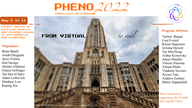Speaker
Description
Direct detection experiments looking for a scattering signal have gained sensitivity to dark matter as light as ~MeV. A promising strategy for lowering the threshold to the keV-scale is to look for meV-scale phonons in solid-state targets. Such experiments will however be subject to backgrounds from high-energy photons. Radioactive contaminants can emit gamma rays that can scatter in the target to create meV-scale phonons that could mimic the dark matter signal. In this talk, I will present the computation of this background in typical target materials, using a realistic representation of the high-energy photon background. I will also show the comparison of the background rates with the expected signal rates from dark matter. In the end, I will show that the detector-veto is not enough to completely suppress this background, calling for an additional active-veto.

